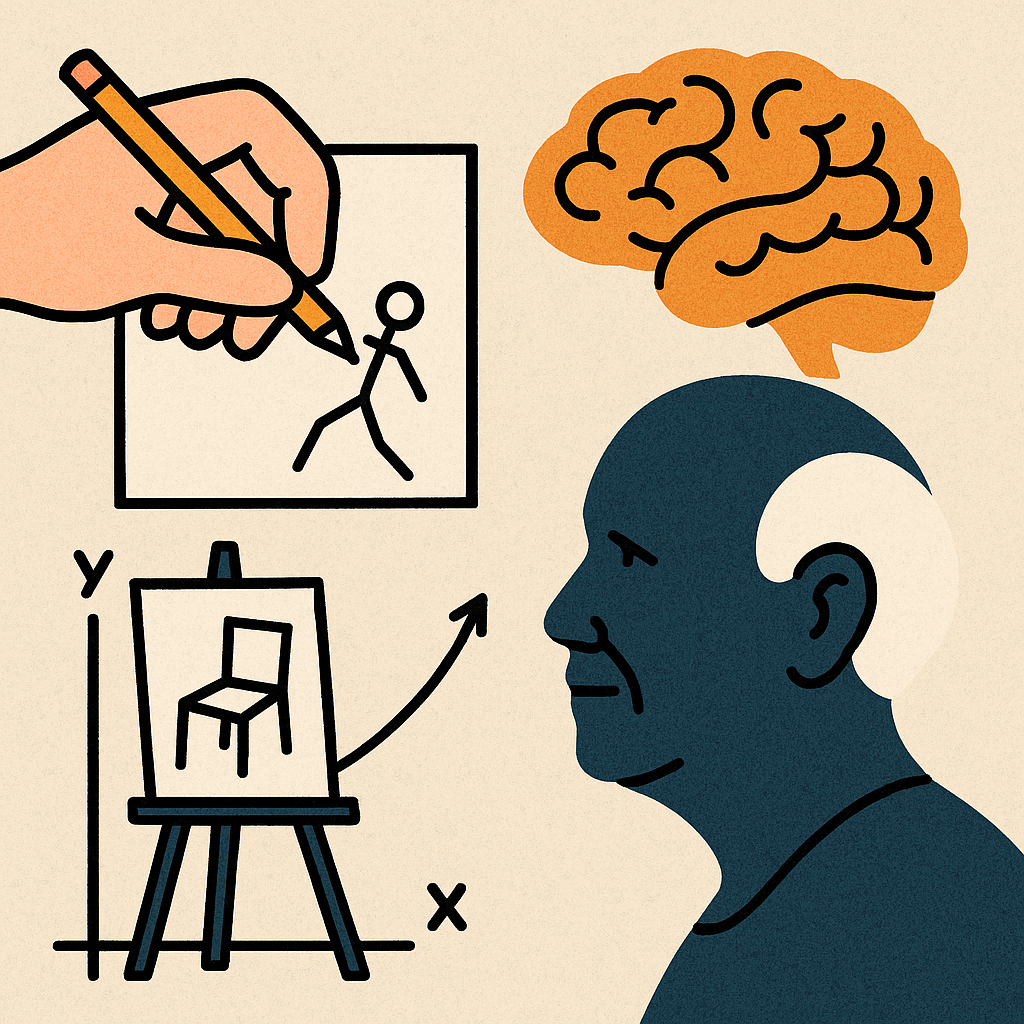
ChatGPT:
Sketching and Cognitive Health: How Drawing Supports the Aging Brain
Aging is often accompanied by changes in memory, attention, and executive function. While these shifts are a natural part of the lifespan, researchers are increasingly interested in accessible strategies that may help older adults maintain cognitive performance and quality of life. One promising, low-cost tool is surprisingly simple: sketching.
Far from being just a childhood pastime, sketching and drawing are now recognized as forms of cognitive exercise that engage multiple neural systems simultaneously. This article explores the psychology and neuroscience behind sketching, with particular attention to its potential benefits for aging populations.
The Science of Sketching
- Cognitive offloading: Sketching externalizes thought. By transferring abstract ideas into visual form, individuals reduce the burden on working memory, which typically declines with age.
- Dual coding: Information is more easily remembered when presented in both verbal and visual formats. Drawing a pill alongside the word “8 AM,” for example, strengthens recall pathways more effectively than text alone.
- Error visibility: A sketch provides concrete feedback. Misrepresentations become immediately apparent, offering opportunities for correction and reinforcing learning.
Neural Mechanisms Involved
- Visual cortex activity: Early visual regions analyze lines, edges, and contours—the basic components of sketches.
- Parietal cortex engagement: These regions integrate visual input with spatial processing and motor planning, enabling the translation of perception into action.
- Functional connectivity: Neuroimaging studies demonstrate that with practice, communication between visual and parietal systems becomes more efficient, supporting improved performance in both producing and interpreting sketches.
- Motor system contribution: The act of drawing recruits motor cortex and cerebellar pathways, adding an embodied dimension to memory encoding.
This multimodal activation creates what researchers call experience-dependent plasticity: the brain’s ability to reorganize itself through practice.
The “Drawing Effect”
Research consistently shows that drawing enhances recall more effectively than writing or reading alone. This drawing effect is especially relevant for older adults. By integrating meaning, imagery, and motor execution, drawing builds multiple retrieval pathways for a single concept. For individuals experiencing age-related declines in memory, this redundancy can be highly beneficial.
Clinical Relevance for Older Adults
- Memory support: Sketching strengthens encoding and retrieval, helping with everyday tasks such as remembering appointments or medication schedules.
- Executive function: Drawing requires planning and organization, stimulating frontal systems that are vulnerable to age-related decline.
- Mood and behavior: Art-based interventions are associated with reduced agitation and improved quality of life in dementia care settings.
- Social engagement: Group drawing activities foster communication and connection, both of which are protective against cognitive decline.
Practical Applications
- Daily reminders: Replace or supplement written lists with simple sketches—icons for groceries, medications, or appointments.
- Narrative recall: Encourage older adults to sketch scenes from their day or from personal memories, supporting both reminiscence and narrative coherence.
- Structured sessions: Short, frequent practice (10–15 minutes daily) is more effective than infrequent, longer sessions.
- Feedback and exchange: Comparing sketches with originals, or sharing them with peers, reinforces accuracy and communication.
A Complementary Approach
It is important to note that sketching is not a cure for Alzheimer’s disease or other neurodegenerative conditions. However, it represents a safe, enjoyable, and evidence-supported way to engage multiple brain systems. When integrated into daily life or structured programs, sketching can complement other lifestyle factors—such as exercise, sleep, and social activity—in supporting cognitive resilience.
Conclusion
Sketching provides more than aesthetic value. It is a multimodal cognitive exercise that activates visual, motor, and executive networks, enhances memory through dual coding, and fosters social engagement. For aging adults, these effects can translate into meaningful improvements in daily functioning and well-being.
In a field often dominated by expensive brain-training programs and pharmaceutical interventions, the act of drawing offers a simple, accessible alternative: one pencil, one page, and a healthier brain.
